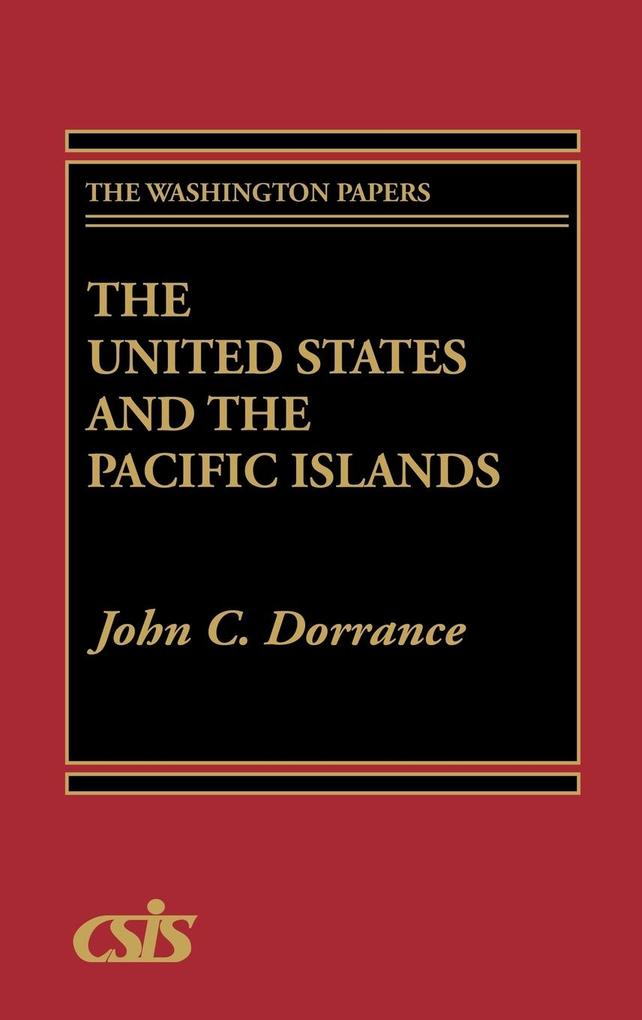
Zustellung: Mi, 16.07. - Sa, 19.07.
Versand in 7 Tagen
VersandkostenfreiBestellen & in Filiale abholen:
Although the Pacific islands were front-page news during the 1941-1945 Pacific War, today they are seldom in the American consciousness--except as a perception of Micheneresque tropical paradises. But the islands--10, 000 strong and scattered over nearly one-fifth of the earth's surface--still straddle or remain close to the sea and air lanes that link the United States with Australia and Asia, and carry nearly one-half of U. S. foreign trade. New political interests also exist with the recent emergence of a new panoply of independent Pacific island states, extension of U. S. sovereignty to other Pacific islands, and new defense responsibilities in several states linked to the United States by free association.
John C. Dorrance offers an exceptionally authoritative and comprehensive assessment of U. S. interests in and policy toward a poorly understood region. The islands, highly aid dependent and uniquely vulnerable to external influences, have experienced insurrections, military coups, secessionist rebellion, political assassinations, Soviet in-roads, and even Libyan mischief-making. Ethnic conflict and developmental problems also threaten democratic institutions and the region's stability. Dorrance thoroughly explores the regional policy environment and the issues that face the United States. His book is of lasting value to scholars and especially to policy-makers and practitioners.
John C. Dorrance offers an exceptionally authoritative and comprehensive assessment of U. S. interests in and policy toward a poorly understood region. The islands, highly aid dependent and uniquely vulnerable to external influences, have experienced insurrections, military coups, secessionist rebellion, political assassinations, Soviet in-roads, and even Libyan mischief-making. Ethnic conflict and developmental problems also threaten democratic institutions and the region's stability. Dorrance thoroughly explores the regional policy environment and the issues that face the United States. His book is of lasting value to scholars and especially to policy-makers and practitioners.
Inhaltsverzeichnis
Foreword
Prefatory Note
Summary
Oceania: The Strategic Environment
Foreign Affairs, Security, and Regionalism
Regional Issues and Challenges
U. S. Interests and Objectives in the Pacific Islands
U. S. Policy in the North Pacific
U. S. Policy in the South Pacific
Australia, New Zealand, and Other External Powers
The Soviet Union and the Pacific Islands
U. S. Policy: Recommendations and Conclusions
Notes
Index
Prefatory Note
Summary
Oceania: The Strategic Environment
Foreign Affairs, Security, and Regionalism
Regional Issues and Challenges
U. S. Interests and Objectives in the Pacific Islands
U. S. Policy in the North Pacific
U. S. Policy in the South Pacific
Australia, New Zealand, and Other External Powers
The Soviet Union and the Pacific Islands
U. S. Policy: Recommendations and Conclusions
Notes
Index
Produktdetails
Erscheinungsdatum
26. Oktober 1992
Sprache
englisch
Seitenanzahl
214
Autor/Autorin
John C. Dorrance
Verlag/Hersteller
Produktart
gebunden
Gewicht
490 g
Größe (L/B/H)
240/161/16 mm
ISBN
9780275944711
Entdecken Sie mehr
Pressestimmen
"Among Americans, John Dorrance's knowledge of the South Pacific was unsurpassed. In this monograph, completed on the eve of his untimely death, he provides a thorough, scrupulously objective survey of the main trends among the newly independent island states of the region and the recent policies directed toward them by the United States as well as by other major nations. His specific recommendations for future U.S. policies warrant serious consideration. This work is the fitting legacy of a dedicated public servant."- Robert A. Scalapino Robson Research Professor of Government Emeritus University of California at Berkeley
Bewertungen
0 Bewertungen
Es wurden noch keine Bewertungen abgegeben. Schreiben Sie die erste Bewertung zu "The United States and the Pacific Islands" und helfen Sie damit anderen bei der Kaufentscheidung.










